Introduction
Since 2013, amidst a wave of high-profile cases of police brutality and the rise of the Black Lives Matter (BLM) movement, law enforcement agencies worldwide have come under heightened scrutiny to confront issues of racial discrimination within their own ranks. In 2014, the deaths of two NYPD officers fuelled the emergence of a counter-movement, Blue Lives Matter.
Blue Lives Matter is intertwined with the Thin Blue Line movement (TBL). The TBL describes the idea of law enforcement being a moral force or protective barrier maintaining order and safeguarding society from descending into chaos. However, since 2015, the TBL emblem has been appropriated by a small number of far-right actors. The significant shift occurred in 2017 during the Unite the Right white supremacist rally in Charlottesville, Virginia, where the TBL symbol became directly associated with larger extremist movements such as the Nationalist Front, the Traditionalist Worker Party, the American Guard, and others.
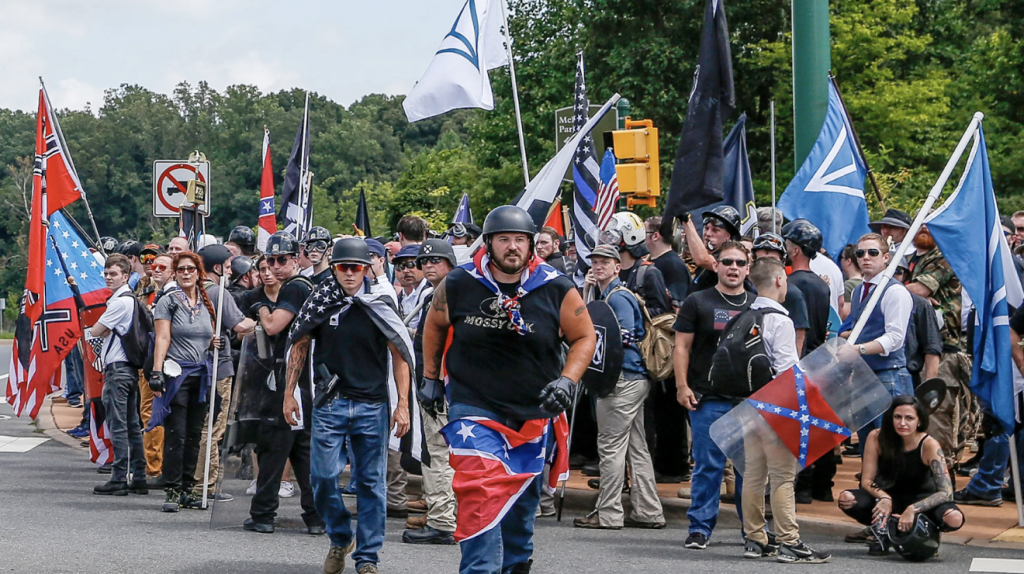
Fig. 1: Multiple white nationalist groups march to McIntire Park in Charlottesville, Va., on 12 Aug 2017. In the centre background is the TBL flag.
During our investigation, we examined TBL websites in approximately fifteen European countries. Most of these sites depict police officers as heroes and promote a ‘warrior myth’. However, not all of the websites share the same degree of violence, far-right symbolism, or what should constitute the idea of ‘supporting’ law enforcement officers.
Background
Since 2015, far-right actors weaponised the TBL emblem during Black Lives Matter counter-demonstrations, aiming to show support for law enforcement and emphasise the importance of a strong police force capable of effectively combating crime. However, in doing so, they have simultaneously propagated ideologies that undermine democratic processes of justice and reparations for victims of crime.
In 2020, groups such as Patriot Prayer, the Oath Keepers militia, and the Proud Boys, who are regarded as domestic terrorists, started using the TBL flag as a symbol. In a photograph taken during a far-right demonstration in Portland (Fig. 2), participants prominently displayed Captain America’s shield, the TBL flag, and slogans associated with the QAnon movement. These symbols and connections highlight the intersection of various extremist ideologies and underscore the potential convergence within the context of the TBL’s usage by police forces.
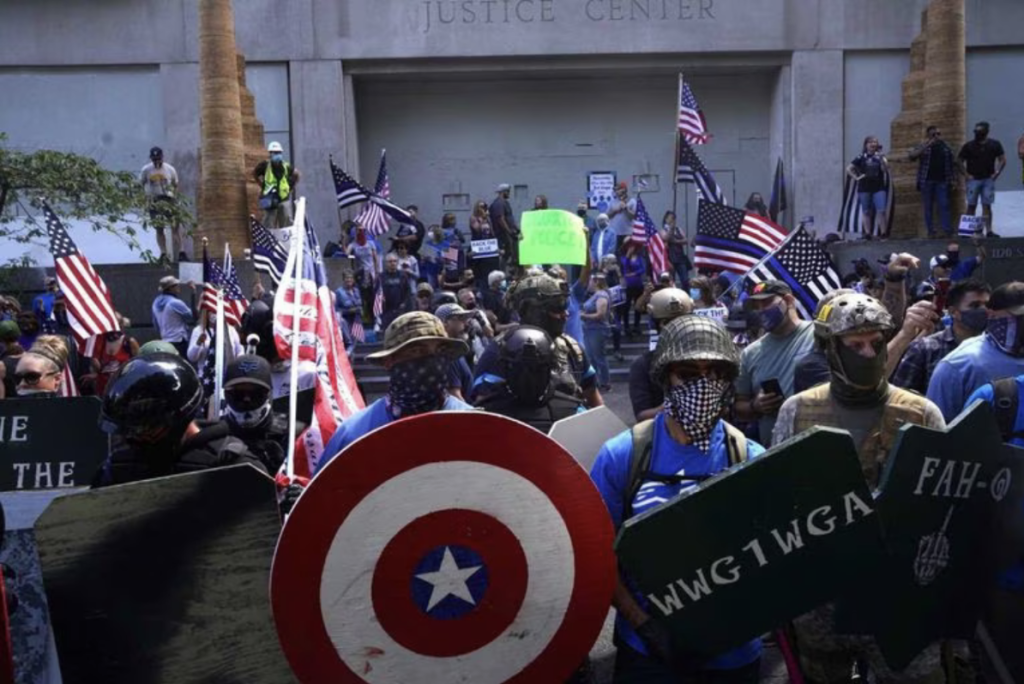
Fig. 2: Far-right demonstration in Portland, Oregon displaying a TBL flag
One of the main symbols used by these far-right actors is the Punisher, a Marvel character who embodies the spirit of vengeance and personal justice. The Punisher is utilised by extremist groups because it propagates the idea of extrajudicial punishment, which aligns with their racist ideologies. The glorification and endorsement of vigilante justice within the TBL movement aim to exacerbate societal divisions and racial tensions that already exist.
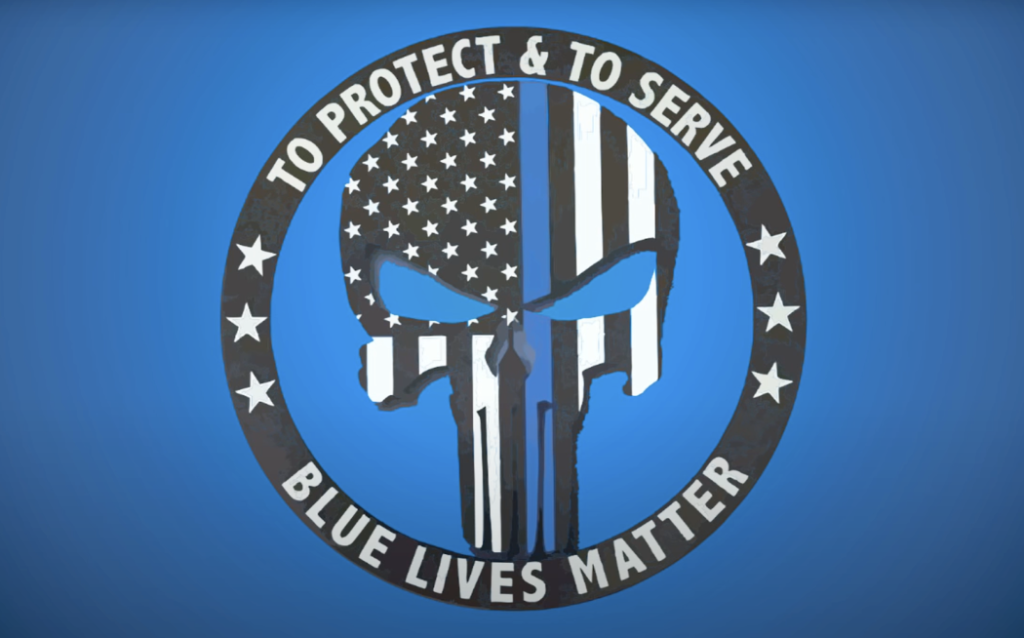
Fig. 3: The Punisher symbol being used in a Blue Lives Matter campaign
It is concerning that the Punisher symbol (Fig. 3) and its associated ideas have gained popularity among police forces, despite the TBL symbol being heavily appropriated by the far-right. The continued use of the Punisher symbol on police uniforms and unit logos had generated significant controversy.
European ‘Thin Blue Line’ Networks and Far-Right Extremism
A series of Thin Blue Line Facebook pages were created in several European countries including the Netherlands, Poland, Sweden, Germany, Switzerland, Denmark, Spain, Italy, Portugal and France. These pages have garnered between 5,000 and 50,000 followers.
The fabrication of warriors who are willing to sacrifice their lives to ‘defend European people’ against perceived imaginary threats is a well-known process employed to reinforce racist notions that are at the ideological core of the extreme right. Similarly, this process is observed in TBL Facebook pages, which embrace the same far-right mentality. These pages depict the police force as heroic warriors who are the last line of defence against chaos, emphasising the necessity for excessive armament and glorifying the Punisher or the Spartans as inspirational symbols.
These accounts not only express support for the police but also disseminate content that aligns with far-right narratives, nationalist rhetoric, and opposition to progressive movements like Black Lives Matter. In this section, I outline the content of TBL sites across three themes: promoting racial profiling, merchandise, and far-right dog whistles.
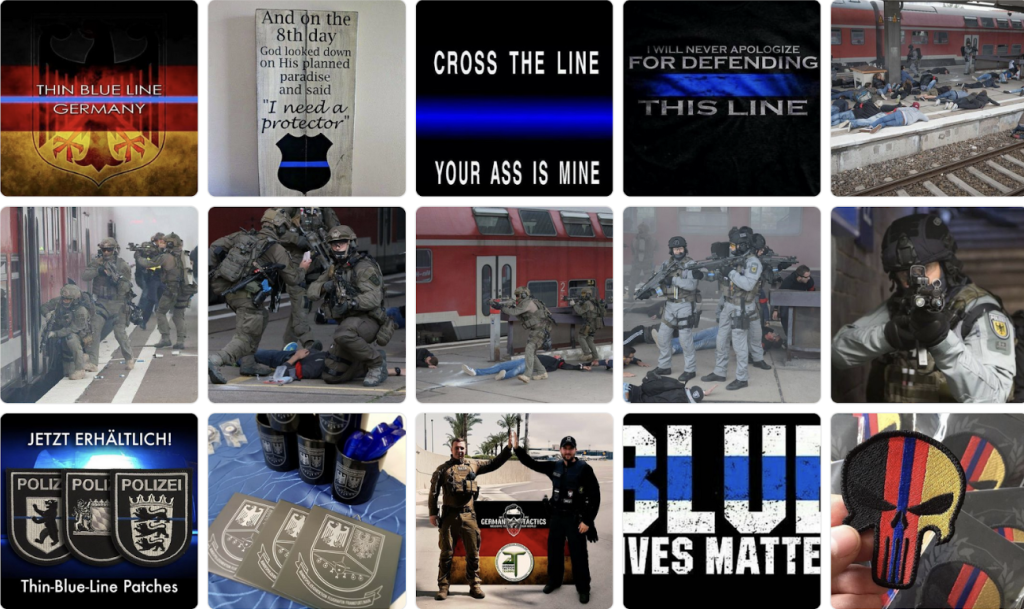
Fig. 4: Screenshot from the German TBL Facebook page, 2023.

Fig. 5: Screenshot from a French private police officer’s Instagram account. These two policemen identify themselves with Batman, the DC Comics hero who, in the movies, works with the police but is also an assassin.
Perpetuating Racial Profiling
The Thin Blue Line has become a topic of concern regarding its association with racial profiling. When examining the relationship between the Thin Blue Line, the police, and racial profiling, several important points come to light.
The TBL and Blue Lives Matter movements were born out of a denial of the reality of systemic racism and brutality within law enforcement. The use of the TBL symbol as a means to show unwavering support for law enforcement can act as a barrier to acknowledging and addressing the issues of racial bias that exist within policing practices.
Many studies and reports, including those from Amnesty International, support the fact that racial profiling is indeed prevalent within European police forces. Likewise, anti-migration policies contribute to the perpetuation of these racially discriminatory practices within law enforcement. Additionally, it is important to note that anti-drug policies result in increased surveillance and targeting of racialised individuals.
Thin Blue Line Merchandise
TBL supporters have also developed websites selling commodities associated with the TBL movement, featuring symbols such as the Punisher, Spider Man, Iron Man, and more recently, John Wick. These movie heroes kill indiscriminately and by any means to protect their communities, but not necessarily to defend democracy. Badges or ‘moral patches’ sporting these characters reflect the notion of police officers as warriors and, when necessary, assassins.

Fig. 6: Screenshot from the Swiss TBL website selling superhero-branded merchandise.
It is important to note that TBL merchandise has been used in police uniforms, despite being prohibited in several European countries. In countries like France or Italy, there are police officers who are part of the TBL movement and propagate its ideology within the police force itself. In Italy, with the consent of the police forces, the movement has even succeeded in establishing a Thin Blue Line Day to convey a sense of brotherhood and solidarity.
The TBL sites also offer training to police officers through independent companies, aimed at developing a more militarised, violent, and heavily-armed police force. Through our investigation, we have identified a series of symbols that are popular among white nationalists or white supremacists in photos shared by the training companies contracted by police forces to conduct this training. These symbols are connected to Odinism, Wotanism, Viking or Celtic imagery or Spartan warriors.
ACAB: Reversing the Stigma and Embracing an Extremist Perspective
The emergence of TBL accounts in Europe has raised concerns about the infiltration of right-wing extremists within police forces. The use of symbols associated with white supremacy and far-right movements, along with intelligence obtained from private police officer social media accounts, indicates rising levels of far-right radicalisation. The ACAB (‘All Cops are Bastards’) slogan was traditionally associated with anarchist anti-authoritarian activism until it was co-opted by far-right hooligans and extremist skinheads in the 1980s. Police forces have, in recent years, co-opted the slogan too, this time to mean ‘All Cops Are Brothers’. In a process known as ’stigma reversal’, those with power privilege co-opt the talking points of marginalised groups to speak to their own perceived victimisation. For example, in response to the BLM movement, white supremacists from the Aryan Renaissance Society created the slogan ‘White Lives Matter’.This same stigma reversal is also expressed through the concept of ‘anti-white racism’, repeatedly used by European Identitarian movements.
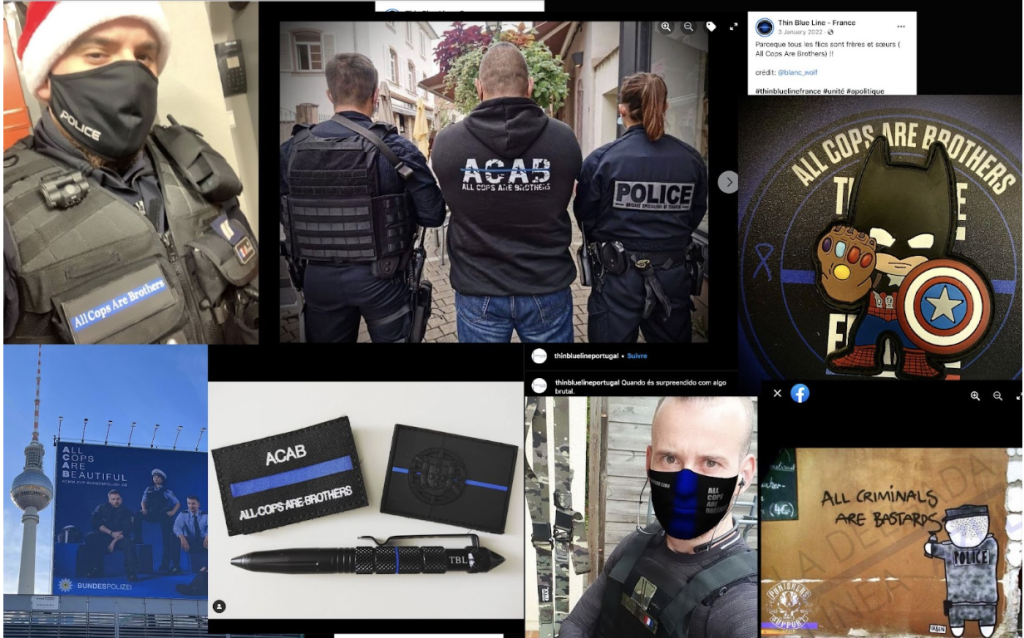
Fig. 7: Police officers supporting the ACAB/’All Cops are Brothers’ slogan and posting them on the TBL network
In countries where protests are more frequent, such as France or Germany, individuals defending their social rights or environmental activists are targeted by far-right groups as ‘vermin’ who seek to corrupt the system. This reflects a far-right ideology also exploited by the TBL movement to radicalise police officers, propagating the idea that progressivism or fighting for social improvement, goes against the values of the police.
As of today, no European police force has explicitly banned the use of the TBL symbol. There have been recommendations from police authorities in France and Germany, but no definitive actions have been taken. Recently in Switzerland, during the trial of six Lausanne police officers accused of causing the death of Nigerian citizen Mike Ben Peter, an on-duty police officer wore a TBL patch. Exposed by the anti-fascist newspaper Renverse, Deputy Mathilde Marendaz intends to bring this matter to the attention of the Grand Council.
Conclusion
The emergence of the European TBL network has shed light on the troubling presence of far-right extremist ideologies within law enforcement. This movement, initially formed in response to criticisms of police misconduct, has been co-opted by far-right groups who promote an ideology that undermines democratic processes and deepens societal divisions. The far-right strategically exploits the TBL symbol to champion a strong police force while glorifying extrajudicial punishments and vigilante justice. This investigation reveals that a significant number of these accounts actively embrace far-right ideologies, disseminate content that aligns with nationalism, and oppose progressive movements and values. The widespread use of symbols associated with white supremacy raises concerns about the infiltration of extremist ideologies within law enforcement.
